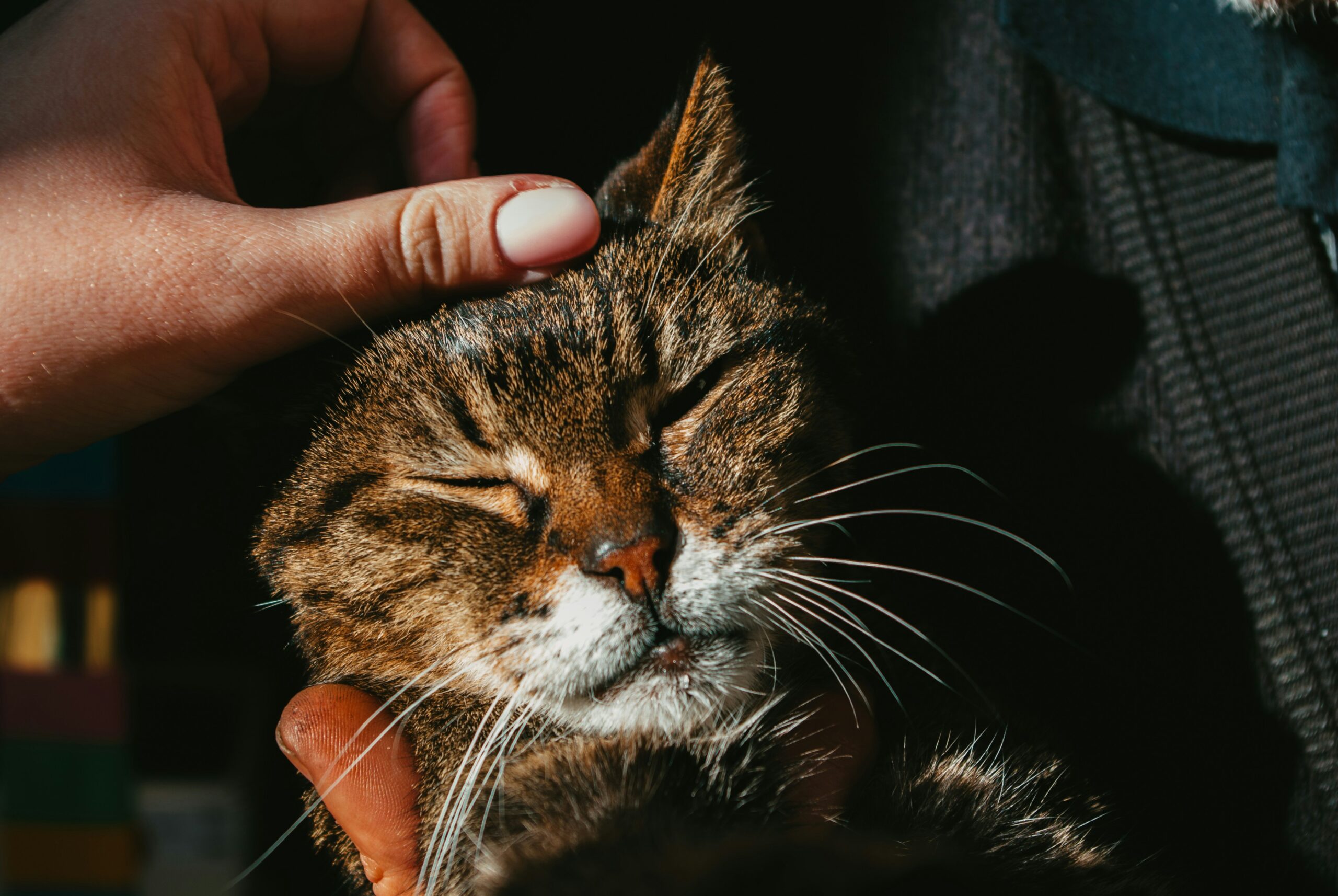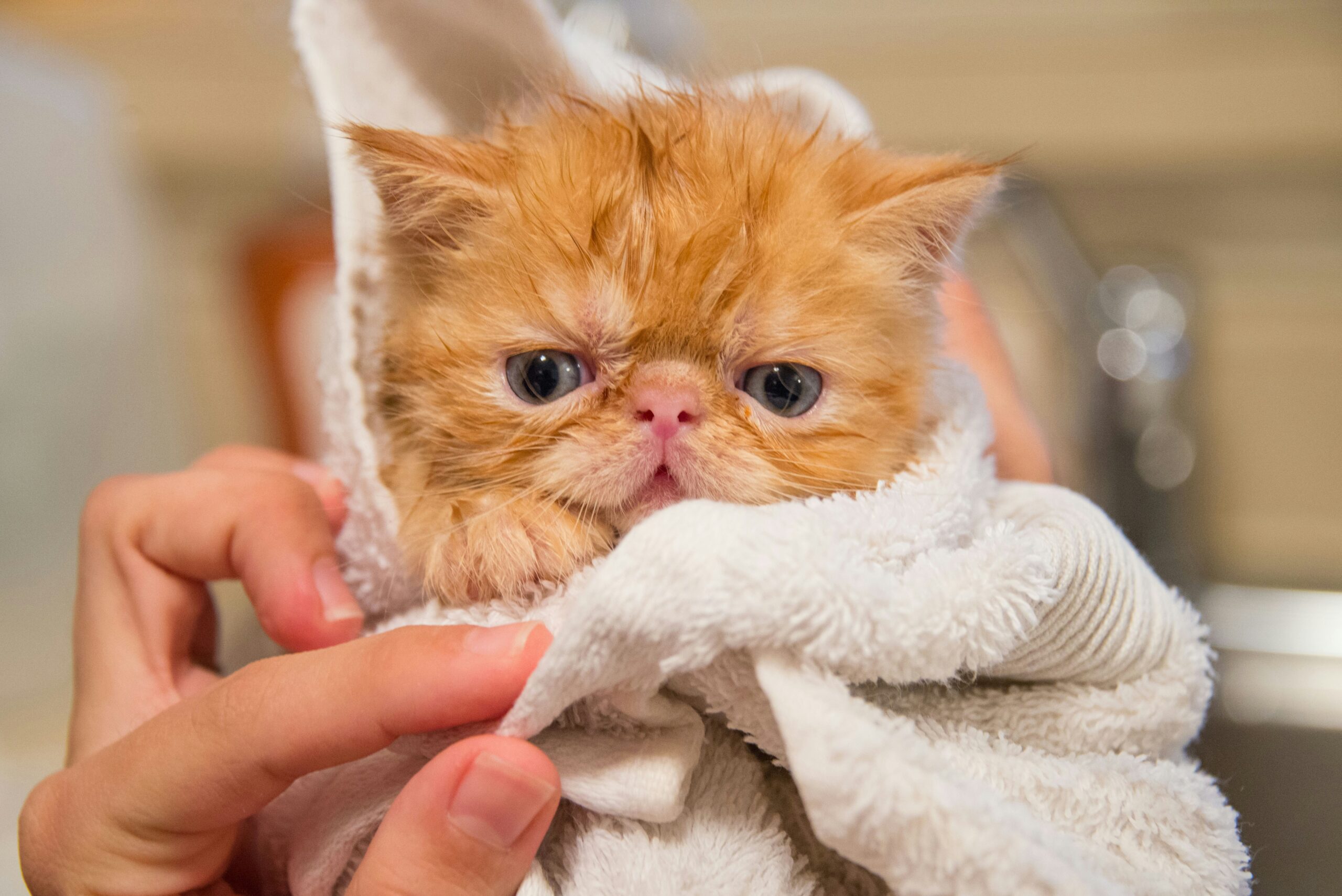Caring for a cat means giving them proper food, fresh water, a clean litter box, and regular vet visits. Cats also need playtime, safe space indoors, and your attention to stay happy and healthy.
In this guide, I’ll share:
- Basic cat care essentials (food, litter, grooming)
- Health and safety tips every cat owner should know
- My personal experience living with cats and what actually works
Whether you just adopted a kitten or you’ve had cats for years, these simple tips will help you understand what your cat really needs.
You Might Also Like:
- Daily Cat Care Routine for Beginners – My Simple Tips
- How to Take Care of a Cat – The Basics You Can’t Skip
- How to Clean a Cat the Right Way Without Getting Hurt
- What Can I Feed My Cat? Safe and Healthy Options Explained
- How to Convince Your Mom to Get a Cat the Smart Way
- Cat Not Eating? What It Means and How to Help
- Stray Kitten Care – What to Do When You Find One
They’re Basically Tiny Lions
Here’s the thing about cats – they’re what we call “obligate carnivores,” which is a fancy way of saying they NEED meat to survive. Like, seriously need it. They can’t just munch on veggies and call it a day like some other pets. Their bodies literally require this amino acid called taurine that only comes from animal protein. So if you’re learning how to take care of a cat, understanding their dietary needs is one of the most important things to get right from the start. Your cat’s expensive taste for the good stuff? It’s actually biology, not them being picky (well, mostly).
Creating a Cat-Friendly Home
Cats are all about territory, and congratulations – your place is now theirs! They’ll need some high-up spots to survey their domain (aka your coffee table), cozy hiding places for when they’re feeling antisocial, and plenty of entertainment. A bored cat is a destructive cat, and trust me, you don’t want to come home to shredded curtains and knocked-over plants.
Keep things interesting with puzzle feeders, rotating toys, and daily play sessions. And yes, that laser pointer will become your best friend, but don’t forget to let them “catch” something real at the end – they need that victory!
Cracking the Cat Code
Cats aren’t as mysterious as they like us to think. Once you learn their language, you’ll realize they’re actually pretty chatty:
- Tail thrashing = “I’m annoyed, back off”
- Purring = usually happy (but sometimes they purr when they’re hurt, because cats are complicated)
- Slow blinks = “I love you” in cat speak
- Ears back = “I’m scared or mad”
The key to bonding? Let them come to you. I know it’s tempting to smother them with love, but cats respect your personal space about as much as you respect theirs (which is to say, not at all). Patience is everything.
Feeding Your Feline Friend
The Great Food Debate
Wet food vs. dry food – it’s like the pineapple on pizza argument of the pet world. Here’s the deal: wet food is amazing for hydration (cats are notoriously bad at drinking water), while dry kibble helps keep their teeth clean. Most vets suggest doing both, and honestly, your cat will probably have opinions about this anyway. If you’re figuring out how to take care of a cat, getting their nutrition right is one of the first choices you’ll have to make.
For kittens: They’re basically tiny energy tornadoes, so they need nutrient-packed food and frequent meals (3–4 times a day).
For adult cats: Stick to a routine – cats love predictability almost as much as they love knocking things off counters.
For senior cats: They might need special food that’s easier on their kidneys and joints
Foods That’ll Send You to the Emergency Vet
Please, for the love of all that’s holy, keep these away from your cat: chocolate, garlic, onions, grapes, raisins, alcohol, and caffeine. I know your cat might give you those adorable begging eyes, but resist!
The Water Struggle is Real
Getting cats to drink enough water is like trying to get a teenager to clean their room – technically possible but requires strategy. Here’s what works:
- Get a pet fountain (moving water is like catnip for some cats)
- Put water bowls all over the house
- Add a tiny bit of low-sodium chicken broth to entice them
- Keep it fresh – would you drink day-old water? Neither will they
Cat Grooming Basics: How to Take Care of a Cat Without Losing an Eye
Even though cats spend like 30% of their day grooming themselves, they still need your help. Regular brushing prevents those lovely hairball surprises on your carpet and helps you spot any weird lumps or bumps early — it’s a small but essential part of learning how to take care of a cat properly.
For long-haired cats: Daily brushing is non-negotiable unless you enjoy detangling matted fur (spoiler: you don’t).
For short-haired cats: A few times a week should do it
Nail trimming: Every few weeks, unless you enjoy having furniture that looks like it went through a paper shredder.
Dental care: Yes, cats need their teeth brushed too. Cat toothpaste only (human toothpaste is toxic), and good luck with that!
Pro tip: Start grooming routines when they’re young, bribe heavily with treats, and keep sessions short. Rome wasn’t built in a day, and your cat’s trust in your grooming skills won’t be either.
Litter Box Tips: How to Take Care of a Cat’s Bathroom Habits
The Golden Rule in Cat Care: Respect Their Boundaries
One box per cat, plus one extra. So if you have two cats, you need three boxes. I don’t make the rules, cats do.
Location, Location, Location
Put litter boxes somewhere quiet and private. Not next to their food (would you want to eat in your bathroom?), and definitely not in high-traffic areas where the dog or kids might bother them.
Maintenance is Everything
Scoop daily, change weekly, and wash the whole box monthly. Trust me, cats have standards, and a dirty litter box might result in “protests” in unwanted places.
How to Handle Cat Health Problems Quickly
If your cat suddenly stops using the litter box, don’t panic, but do act fast. It could be a medical issue (UTIs are common), stress, or they’re just being dramatic about the box being 0.2% dirtier than they prefer. When in doubt, call the vet.
How to Keep Your Cat Healthy: Care Tips That Save Money at the Vet
Regular Check-ups Save Lives (And Money)
Annual vet visits might seem expensive, but they’re way cheaper than emergency surgery for something that could’ve been caught early. Plus, cats are masters at hiding illness – they could be dying and still judge you for your life choices.
How to Take Care of a Cat’s Vaccination and Health Prevention Plan
Get them vaccinated (rabies is usually required by law anyway), and keep up with flea and tick prevention even if they never go outside. Trust me, fleas find a way.
Why Spaying/Neutering Is Part of Cat Care
Do it before they’re six months old. It prevents unwanted litters, reduces cancer risks, and might save your sanity (intact cats can be… dramatic).
How to Keep Your Cat at a Healthy Weight
Chubby cats might look cute in internet memes, but obesity leads to serious health problems. If you can’t feel their ribs, it’s time for portion control and more play sessions.
How to Spot Health Issues in Cats Early
Call the vet if you notice sudden appetite changes, hiding, excessive grooming, vomiting, diarrhea, or trouble breathing. Cats don’t complain much, so when they’re obviously uncomfortable, it’s serious.
Cat Training Guide: How to Take Care of a Cat’s Behavior the Smart Way
Scratching is Non-Negotiable
Your cat WILL scratch things. It’s not revenge for that time you came home late – it’s biology. They’re sharpening their claws, stretching, and marking territory. Don’t punish them; redirect them!
Get good scratching posts (both vertical and horizontal), put them near where they like to scratch, and maybe sprinkle some catnip on them. When they use the post instead of your couch, throw a little celebration.
Positive Reinforcement Works
Forget everything you know about dog training. Cats don’t respond well to punishment – they just get sneaky or stressed. Reward good behavior with treats, praise, or playtime.
Indoor vs. Outdoor
Look, I get it. The great outdoors seems appealing. But between cars, other animals, diseases, and that neighbor who definitely doesn’t like cats, it’s safer to keep them inside. Make indoor life awesome with window perches, bird feeders outside for “cat TV,” and plenty of stimulation.
The Bottom Line on How to Take Care of a Cat the Right way
Taking care of a cat isn’t just about keeping them alive – it’s about building a relationship with a creature that’ll judge your life choices but also purr on your lap when you need it most. With patience, consistency, and a good sense of humor about the occasional 3 AM zoomies, you’ll slowly master how to take care of a cat in a way that actually works for both of you.
Remember, every cat is different. Some are social butterflies, others are antisocial philosophers. Some are cuddly, others prefer to love you from across the room. The key to truly understanding how to take care of a cat is figuring out what makes your cat feel safe, happy, and loved.
Now go forth and be the cat parent your feline overlord deserves! (And maybe invest in a good lint roller – you’re gonna need it.)
Q: How do you take care of a cat?
A: Taking care of a cat means providing proper food, clean water, a litter box, regular grooming, and routine vet visits. Playtime and attention are also essential for their mental health.
Q: What do cats need?
A: Cats need balanced nutrition, fresh water, a safe and clean environment, a scratching post, toys for stimulation, and regular medical check-ups.
Q: What is caring for a cat?
A: Caring for a cat is the daily responsibility of meeting their physical and emotional needs, from feeding and grooming to giving them love and play.
Q: How to take care of a cat for beginners?
A: Start with the basics: provide quality cat food, a litter box, fresh water, and a safe home. Schedule a vet visit, and spend time bonding through play and gentle handling.
Q: What to know before getting a cat?
A: Before getting a cat, prepare for long-term responsibility. Cats can live 12–18 years, so consider costs for food, vet care, and supplies. Ensure your home is safe and you have time to give them attention.




Very helpful information for a first time furr parents like me! ❤️
thank you so much